Adding a motor goes beyond just obliterating the boundaries of what’s possible on a mountain bike – it also puts into question the long-established bike categories. We tested the Haibike XDURO Dwnhll against the Haibike XDURO Nduro to find out if more suspension means more fun and a safer ride, and whether an E-downhiller is capable of ticking off some day-long rides.
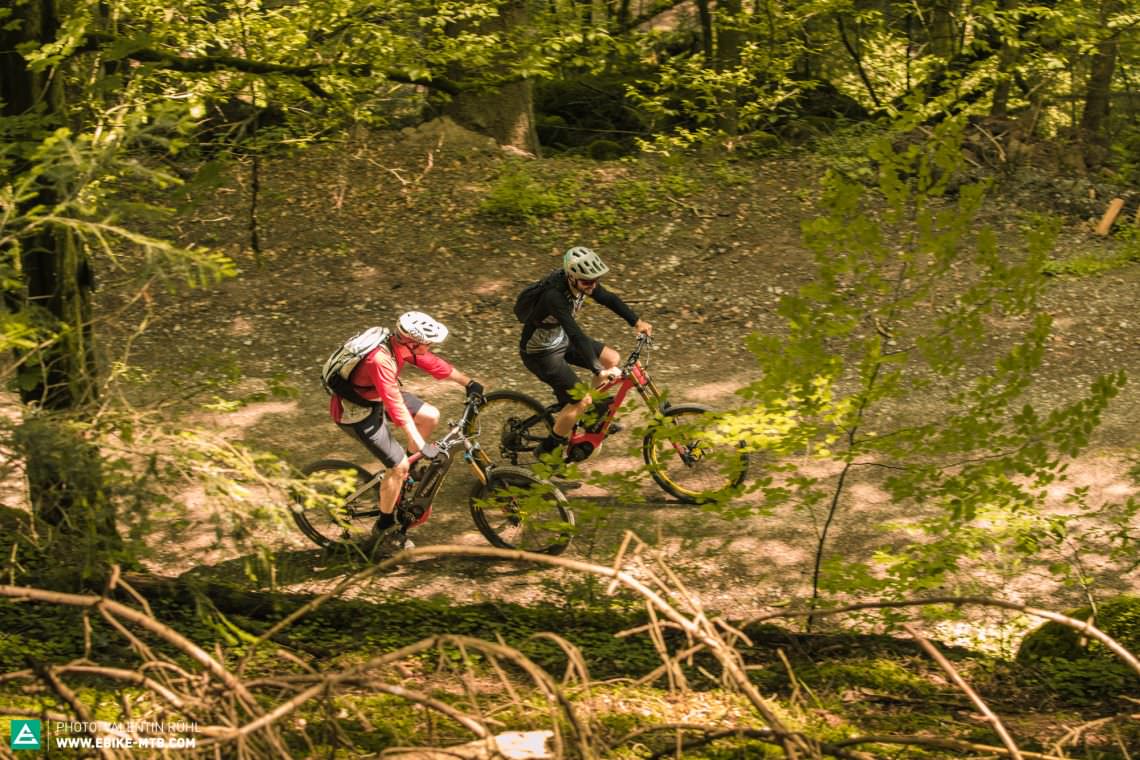
The theory
Conventional mountain bikes can’t avoid the struggle of compromising between uphill efficiency or delivering the ultimate performance on the downhills. Even nominal differences in a bike’s weight, travel, geometry, and spec can lead to major differences in its performance. Yet the theory is very different when it comes to E-MTBs: whatever bike you’re on (provided it has the same motor), you’re basically riding with a 25 km/h tailwind. Try to push over that speed and it’ll get harder on any motorised bike, whether it’s a town bike or a downhill bike (this is the notorious internal resistance). So why not just grab the brawniest bike around – the E-downhill bike – as the theory goes that the biggest difference will purely be in its improved downhill performance. So is bigger really better? Or will this come at the cost of a limited range and less effective pedal-assist? And how important is the correct pedalling position to make sure you get a comfortable ride?
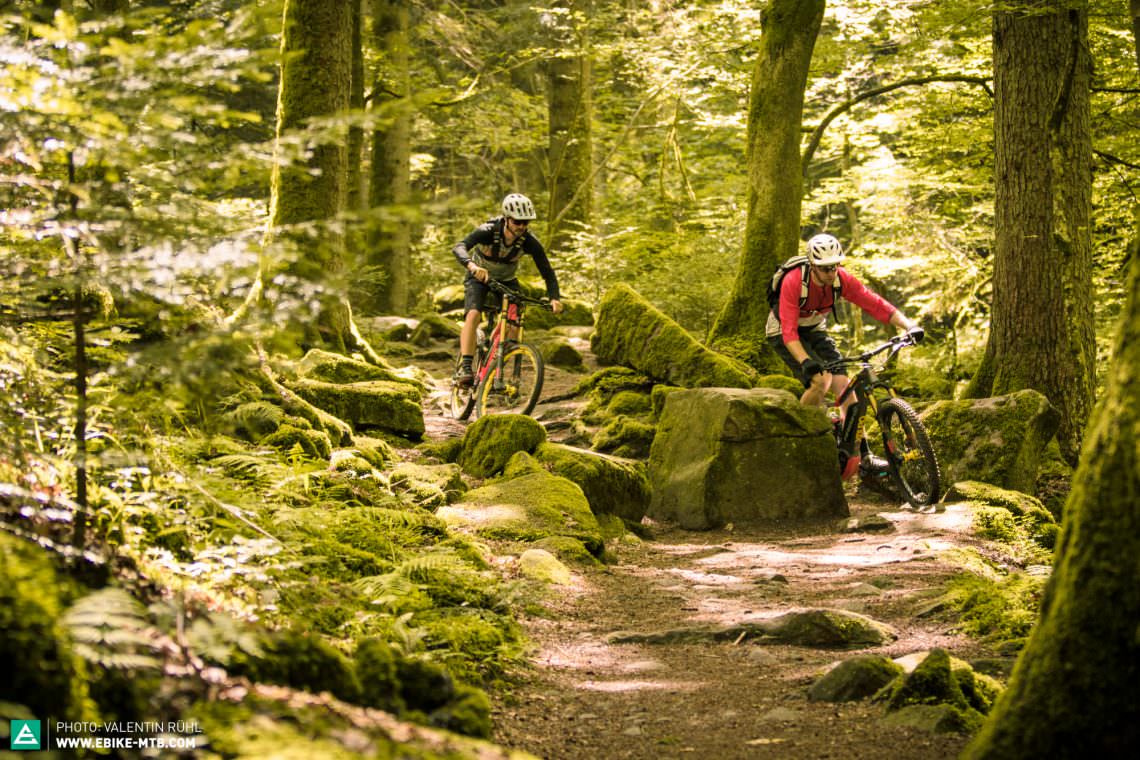
The former definitions
Enduro: Enduro isn’t just a style of competitive mountain biking, it’s also an approach to riding for many people. Enduro symbolizes a fairly long ride with loads of trails and a lot of stoke. The climbs are leisurely, while the descents are all-go.
Downhill: The most technical downhill routes throw riders down steep gradients littered with roots, rocks, drops, and the like. Downhill bikes tend to be highly specialized for the purpose, extreme bikes primed for descents. As a rule, they aren’t designed for the climbs. If you’re on a downhill bike, you’ll be used to shuttling, uplifts, or pushing.
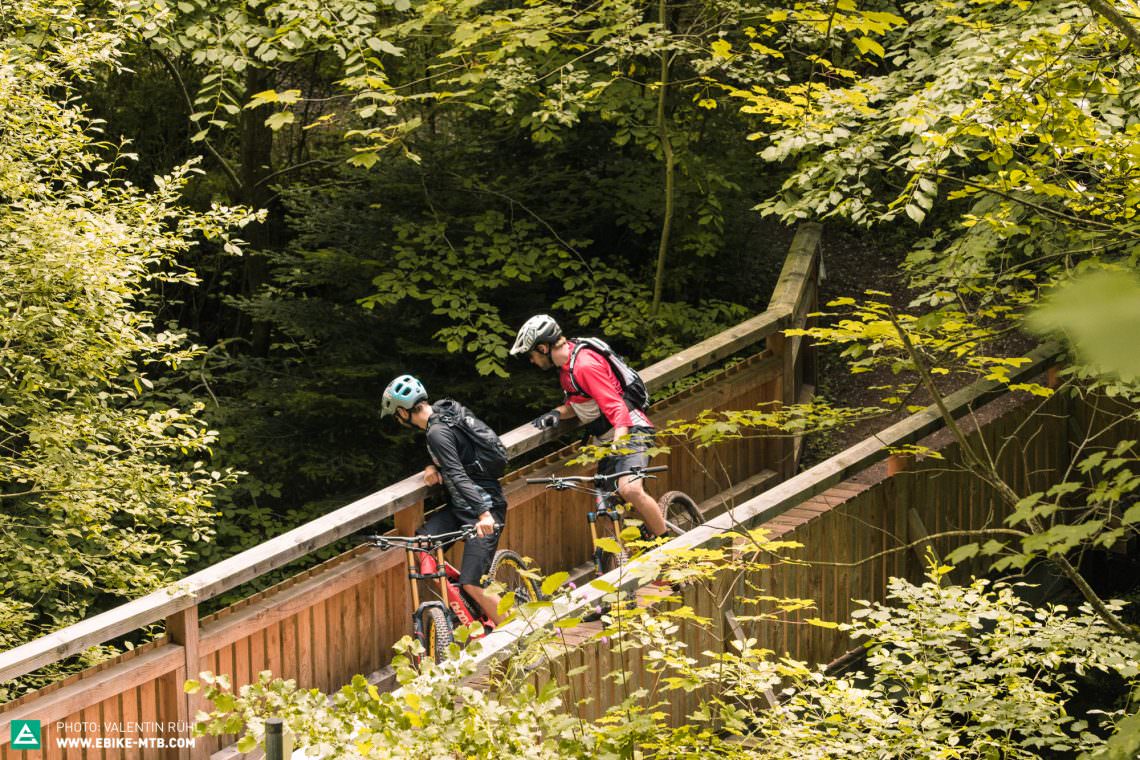
The bikes
With only 20 mm of travel distancing the Haibike XDURO Nduro from the Haibike XDURO Dwnhill, the only other significant (visible) division is the dual-crown fork on the Dwnhill. However, the geometry figures reveal more significant differences, and the Dwnhll bears all the common traits that hint at the ultimate smoothness and stability on the descents: its wheelbase is 50 mm longer, head angle 2° slacker, standover height 30 mm lower, and the bottom bracket is 15 mm lower despite the extra travel.
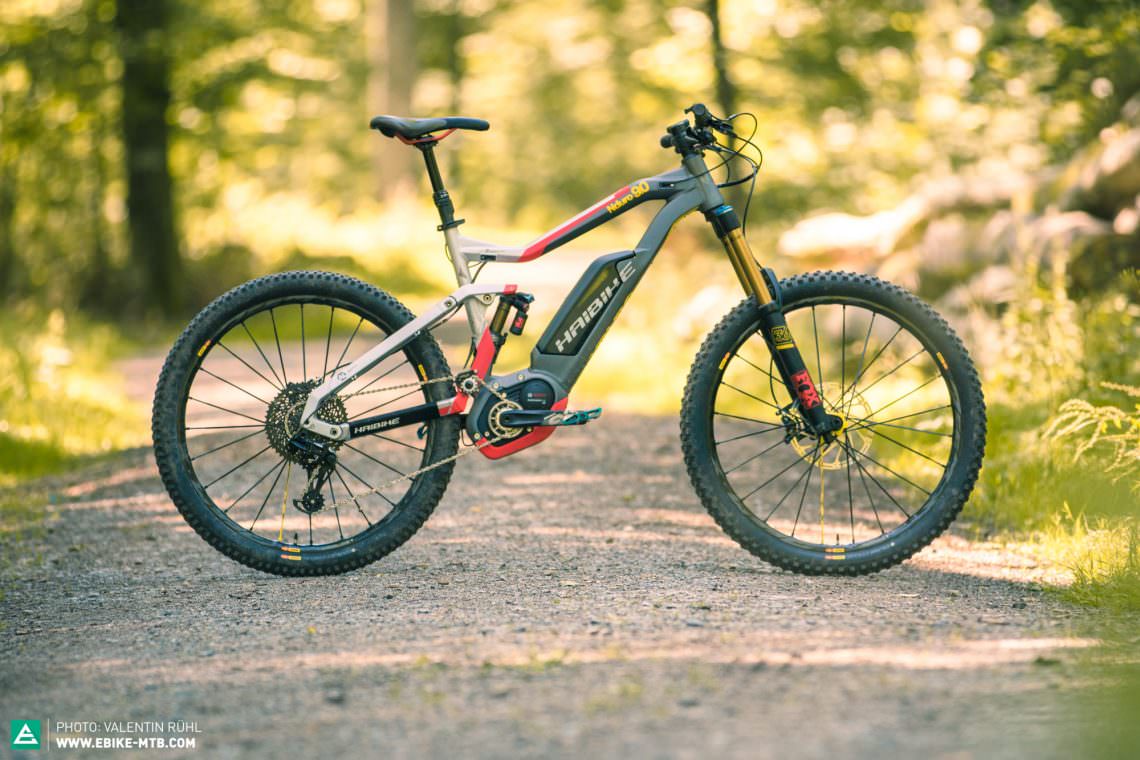
The Dwnhll has stability en masse, but you’ll have to look elsewhere for agility!

The SRAM EX1 is a winner with its big gear range, and the climbing gear is ideal for steep ascents. However, it takes a while to get to used to the big steps between the gears.

Despite being more of a short-travel bike, the XDURO Nduro has an efficient rear that generates a ton of traction and comfort.

On long descents the XDURO Nduro takes its brakes to their limits, so we call for more substantial braking power like the Shimano Saint models on the XDURO Dwnhll.
So, given that the Dwnhll ticks all the boxes on paper to be classed as a do-it-all-and-outshine-the-rest type bike, is it going to deliver the goods or hand over the gauntlet to the popular Nduro? Unsurprisingly the Nduro (22.97 kg) weighs in significantly lighter than the Dwnhill (24.40 kg), so nimbleness looks like it’ll be firmly on the side of the Nduro, right?
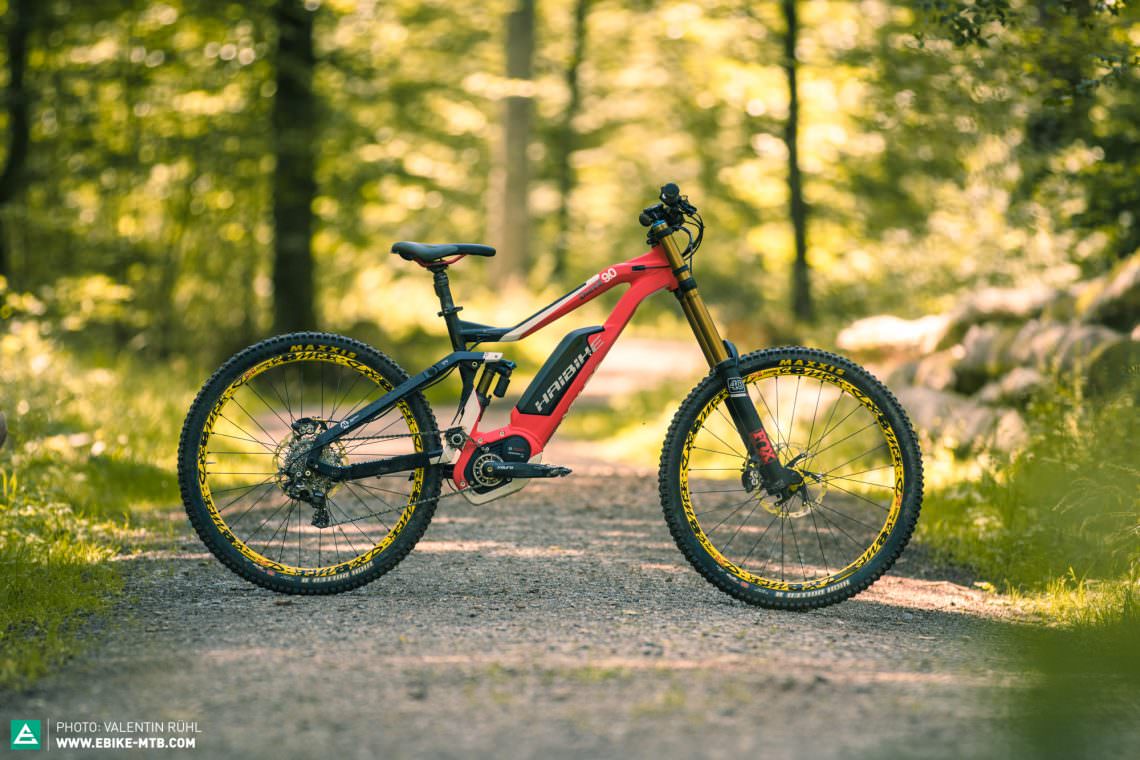
Brawny and buttery smooth – the XDURO Dwnhll keeps its rubber side planted against all odds!

The FOX 40 fork has a plush 200 mm of travel to iron out everything in its way. Its double crown design limits its steering, which doesn’t hamper its trail riding skills but causes some groans when trying to put it in the car boot.
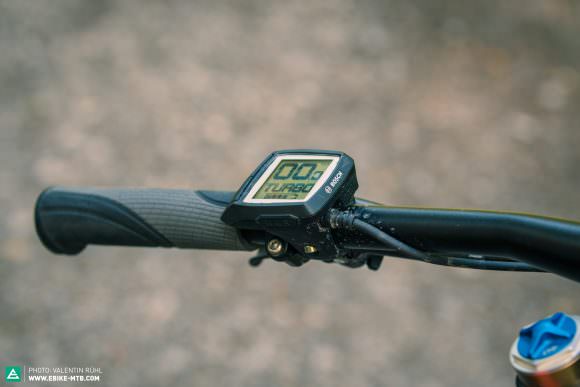
Solidly built, we almost exclusively rode the XDURO Dwnhll and its fat tires in Turbo mode. This bike needs the speed for a dose of agility.
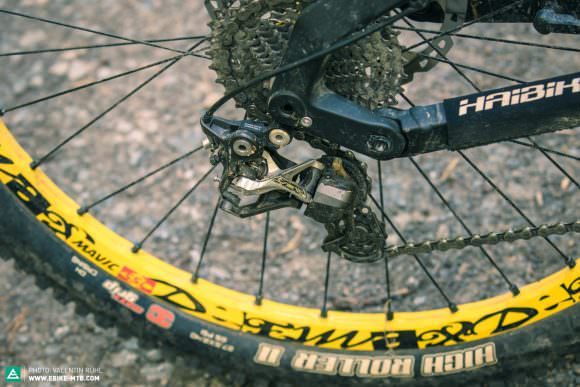
The limited gear ratio of 11–36t makes climbing more challenging, and almost impossible on super-steep gradients. Conventional downhill bikes have a short derailleur cage to keep the chain more stable, but it’s out of place on an E-MTB.
The head-to-head
The Haibike XDURO Dwnhll knows exactly how to go big– and definitely bigger than the Nduro, which is no match for its burly brother when it comes to smoothness and composure in steep, technical terrain. The lower standover height doesn’t just make getting on and off much easier, it also lends itself to more confidence. As we head out on the trail, there are no notable disadvantages to the Dwnhll, although its more extreme geometry initially isn’t the most approachable for entry-level riders.
While conventional mountain bikes tend to roll slower over the flat, E-MTBs are able to pick up a fairly mighty pace. Here’s where the more extreme geometry on the Dwnhll proved more responsive than we’d thought and less hampering at high speeds. If you’re a hands-on rider that rides on tight terrain then you’ll go faster with the more agile Nduro than the Dwnhll. You can take these findings as proof that the geometry is more important than the amount of travel. In other words, it’s the geometry that determines the stoke level and confidence-inspiring ability of the bike. Then the choice between the Dwnhll or the Nduro becomes a question of your riding style. So all things considered, should one rule the XDURO Dwnhll out as a bike for day-long epics?
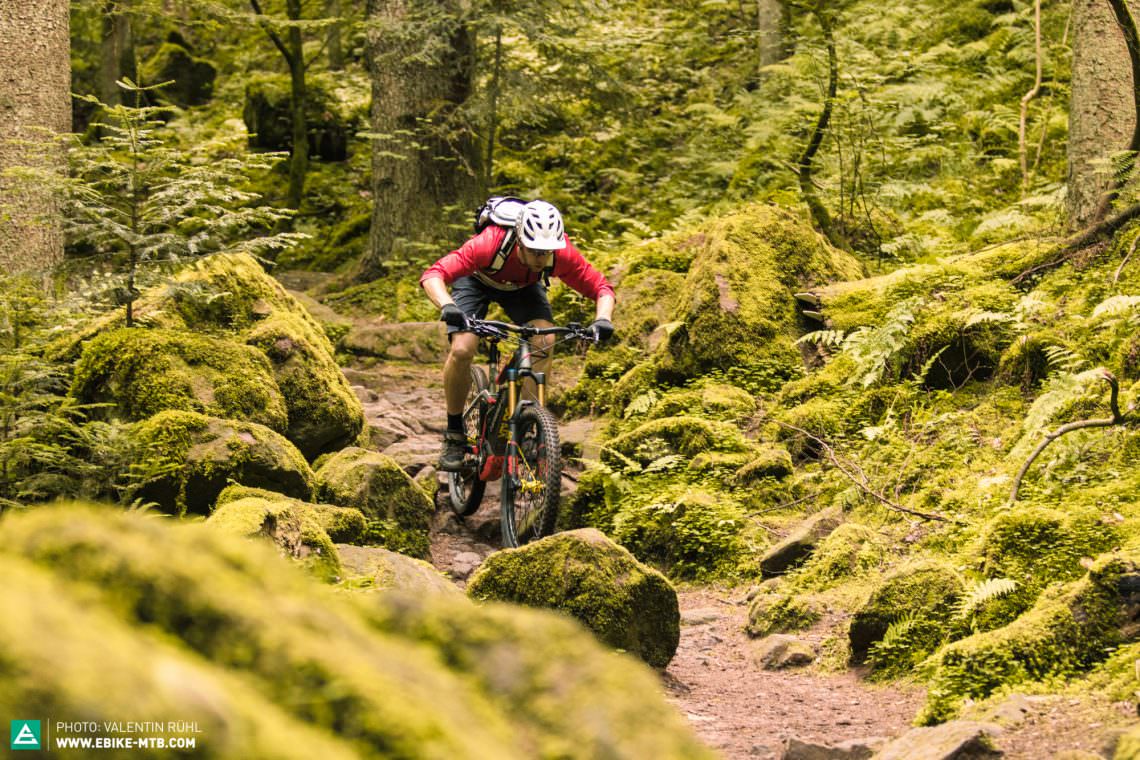
The Haibike XDURO Dwnhll is unquestionably a solid bike for short rides, but there are certain factors that hamper its all-round qualities. Let’s start with the short seat tube: while this may facilitate the low standover height, it sparks a chain of events, beginning with its limitations on the length of the dropper post and the subsequent issue of setting the saddle at the right height for our 180 cm test rider. Then there’s the 11–36t cassette that just isn’t cut out for steep climbs, leading the Bosch Performance CX motor to slow you right down because of the small gear ratio.
If you’re not exclusively on downhill tracks but like to display your off-road experience, then you’ll have a lot more fun with the XDURO Nduro thanks to its agility. The SRAM EX1 drivetrain with an 11–48t cassette has a much broader gear range, which lends it the brawn for climbing. Even in the same level of pedal-assist, the Nduro can leave the Dwnhll in its wake on climbs – this traces back to the geometry and the suspension, which clearly have a big influence. We mainly kept to Turbo mode for the Haibike Dwnhll just to make sure the bike kept a bit of the sprightliness that we’re used to from shorter-travel bikes.

So what does it mean?
This was purely an experiment, and arguably goes against Haibike’s intentions when they designed the Dwnhll as an E-downhill bike. However, the test has also shown that designing an E-MTB doesn’t demand you to translate one-to-one from a conventional mountain bike category – it needs fresh thinking and a new approach to the design. If the Dwnhll had a few tweaks (like a bigger gear range and a longer seat tube that could take a longer dropper post), then we’re confident it’d make a far meaner trail bike that it should. Like an SUV in the city, this E-downhiller can deliver more stability, more confidence, and greater reserves, and it doesn’t have to come at such a cost to its agility. We can’t determine whether you’ll have more or less fun, as that depends on how you ride. The Nduro is definitely a bike that needs to be ridden, while the Dwnhll is almost a bike that likes to ride itself – so see what sort of style you’ve got. But whatever your style, no one would disagree that the Dwnhll is an absolute killer on the descents, and will also most certainly garner way more envious looks on the trail with its poser credentials.
For more info about the bikes head to: haibike.com
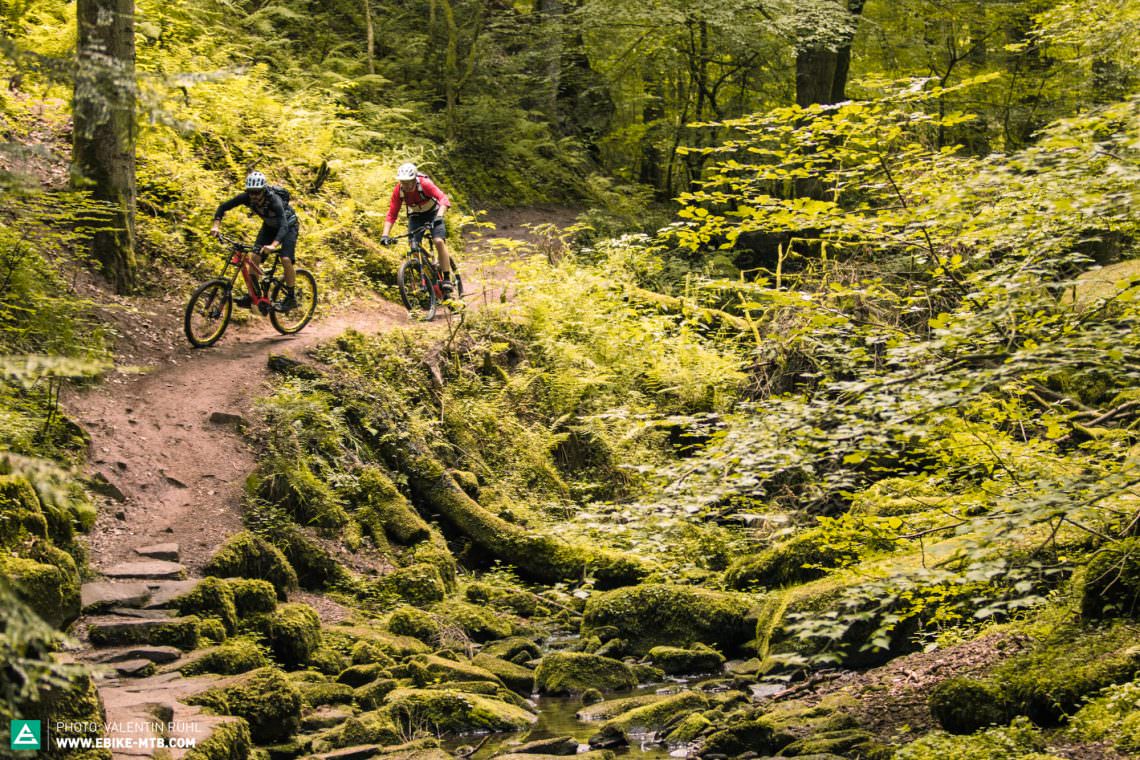
Did you enjoy this article? If so, we would be stoked if you decide to support us with a monthly contribution. By becoming a supporter of E-MOUNTAINBIKE, you will help secure a sustainable future for high-quality cycling journalism. Click here to learn more.
Words: Robin Schmitt Photos: Valentin Rühl












